Exploring Antarctica in Cambridge
In its inaugural year in 2021, the Cambridge Festival managed to reach every continent on Earth - except Antarctica. So, for 2022, we’ve brought Antarctica to Cambridge.
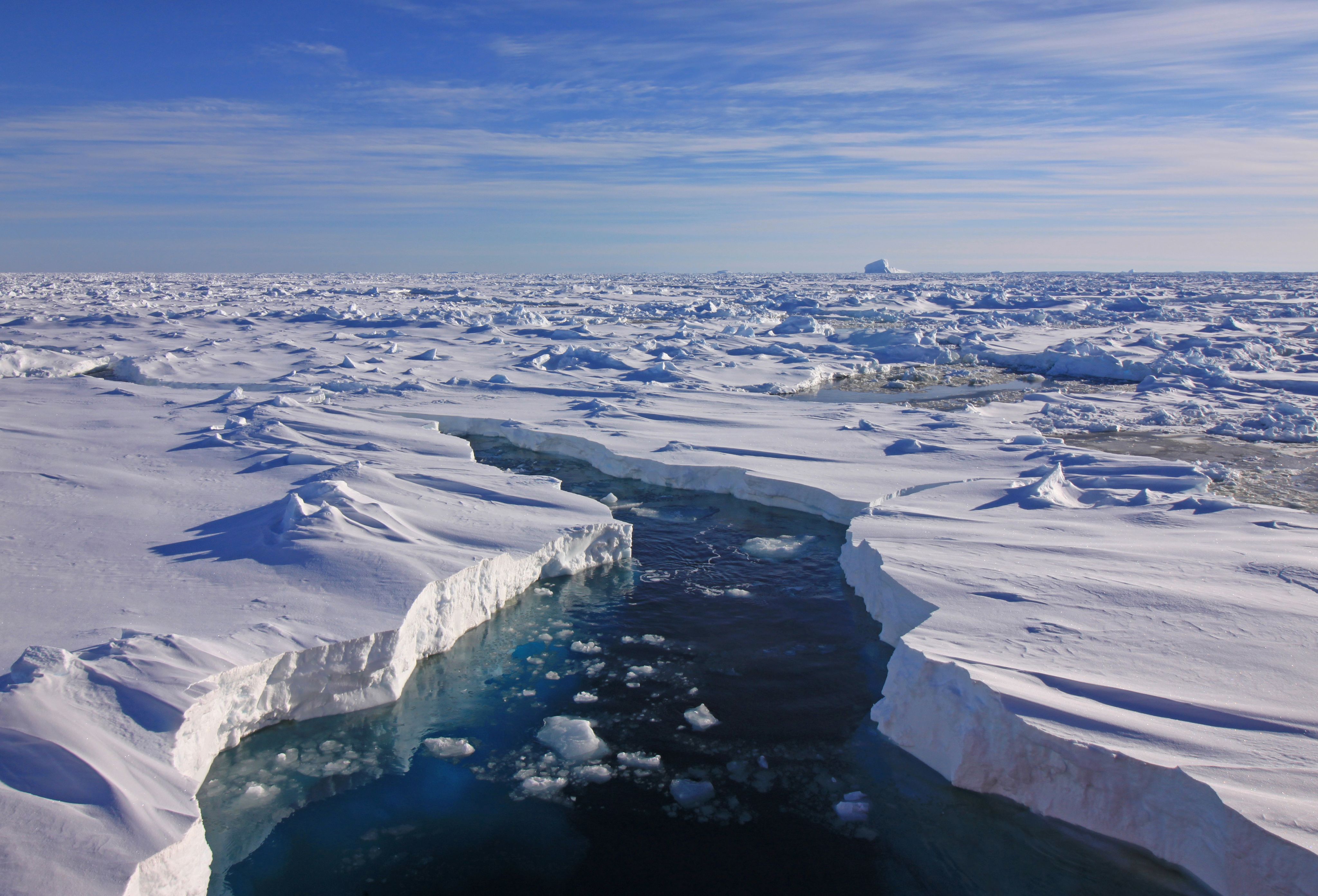
From 31 March - 10 April, you will be able to step inside an exact replica of an Antarctic hut and be transported to Deception Island, a tiny caldera in the Antarctic Ocean, battered by the fiercest seas in the world and shaken by volcanic activity.
The rusting remains of industrial whaling and a seabed littered with whalebones testify to mankind’s greed and brutality. But the island is also an outpost of scientific exploration, a witness to human attentiveness and fortitude.
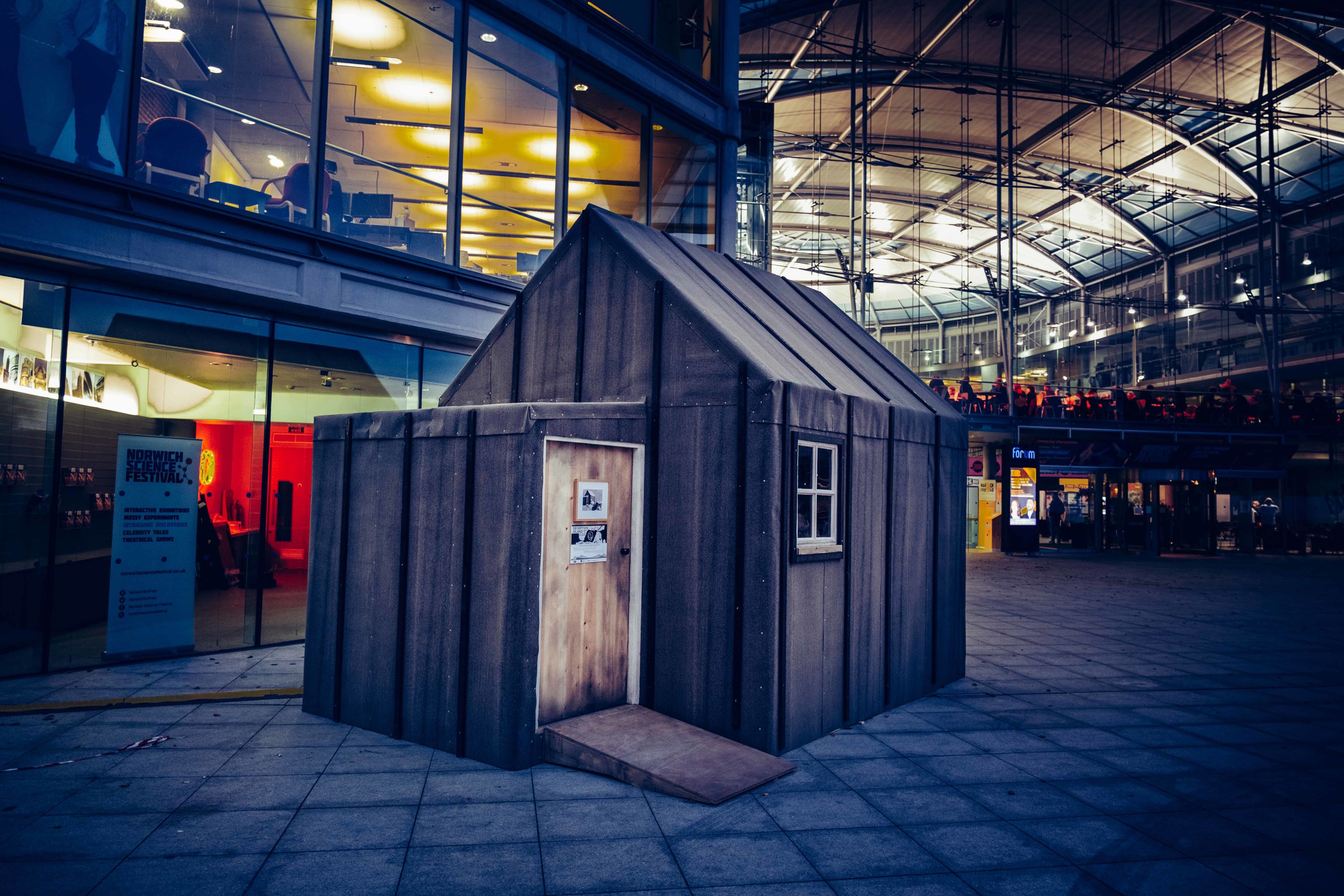
Deception Island in situ at Norwich Science Festival. Credit: Story Machine
Deception Island in situ at Norwich Science Festival. Credit: Story Machine
Deception Island summons a remote frontier where climate and months of winter darkness impose a kind of perpetual lockdown. As the ship carrying the author’s father edges through the basalt cliffs into the calmer waters of Deception Island, the island’s many voices, human and non-human, begin to speak.
Prepare to embark on an immersive poetry, sound and film expedition like nothing you have been on before. Book your space now.
Deception Island is brought to life by current BAS Writer in Residence Elizabeth Lewis Williams who was inspired by a manuscript written by her father of his time in Antarctica. Using her own father’s account of his experience of Deception Island, Elizabeth has created an immersive experience through poetry to allow us to interact with the island and understand how far human impact can reach.
“In Deception we can see evidence of the best and the worst of mankind – rapacity, destructiveness, and tendency to conflict but also resilience, commitment to care and the ability to live and work together in a spirit of co-operation”
Elizabeth Lewis Williams, Writer in Residence at British Antarctic Survey
You will hear voices from the whaling past of the island to more recent scientists living and working there. Listen as the geology of the island comes to life through words and visuals.
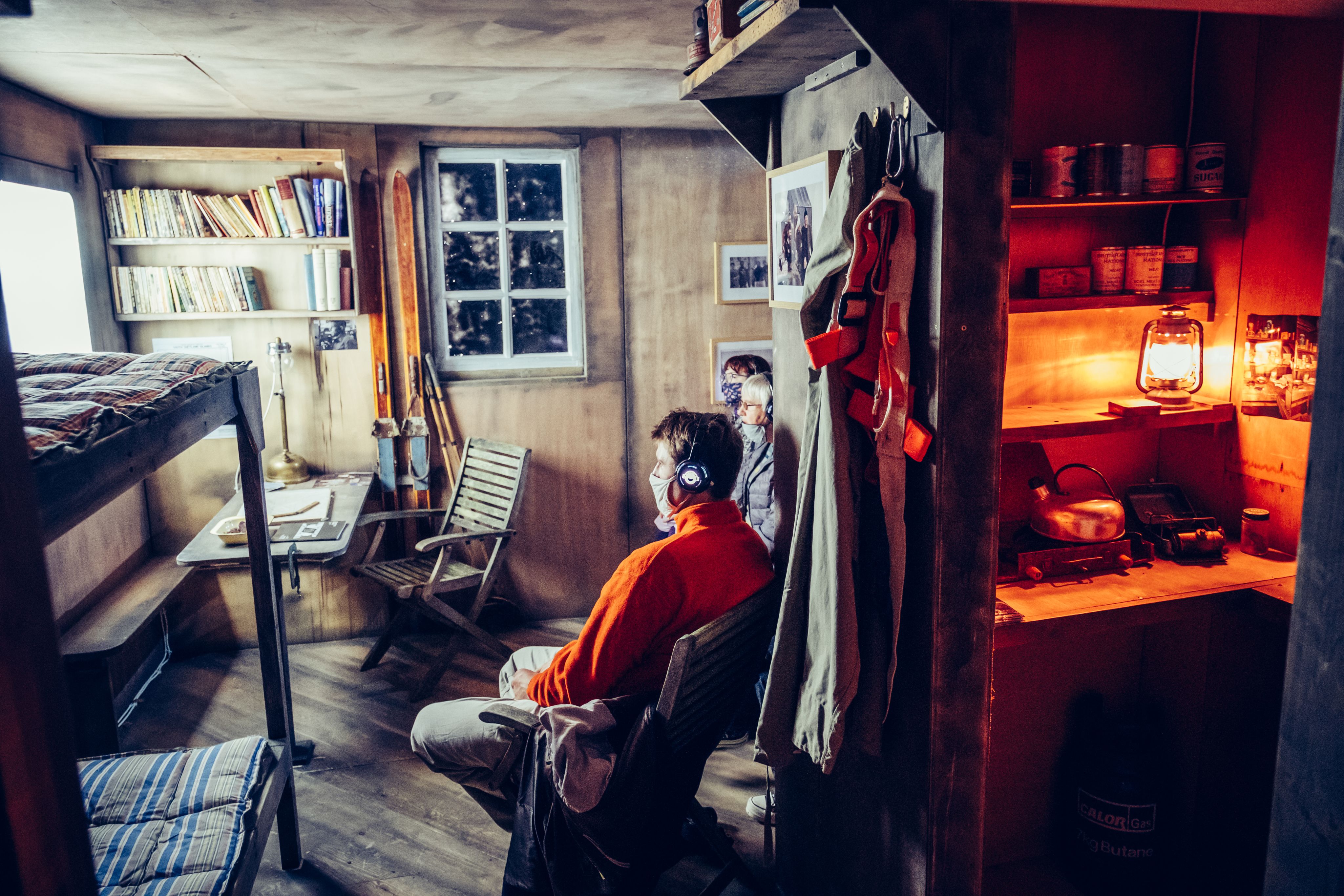
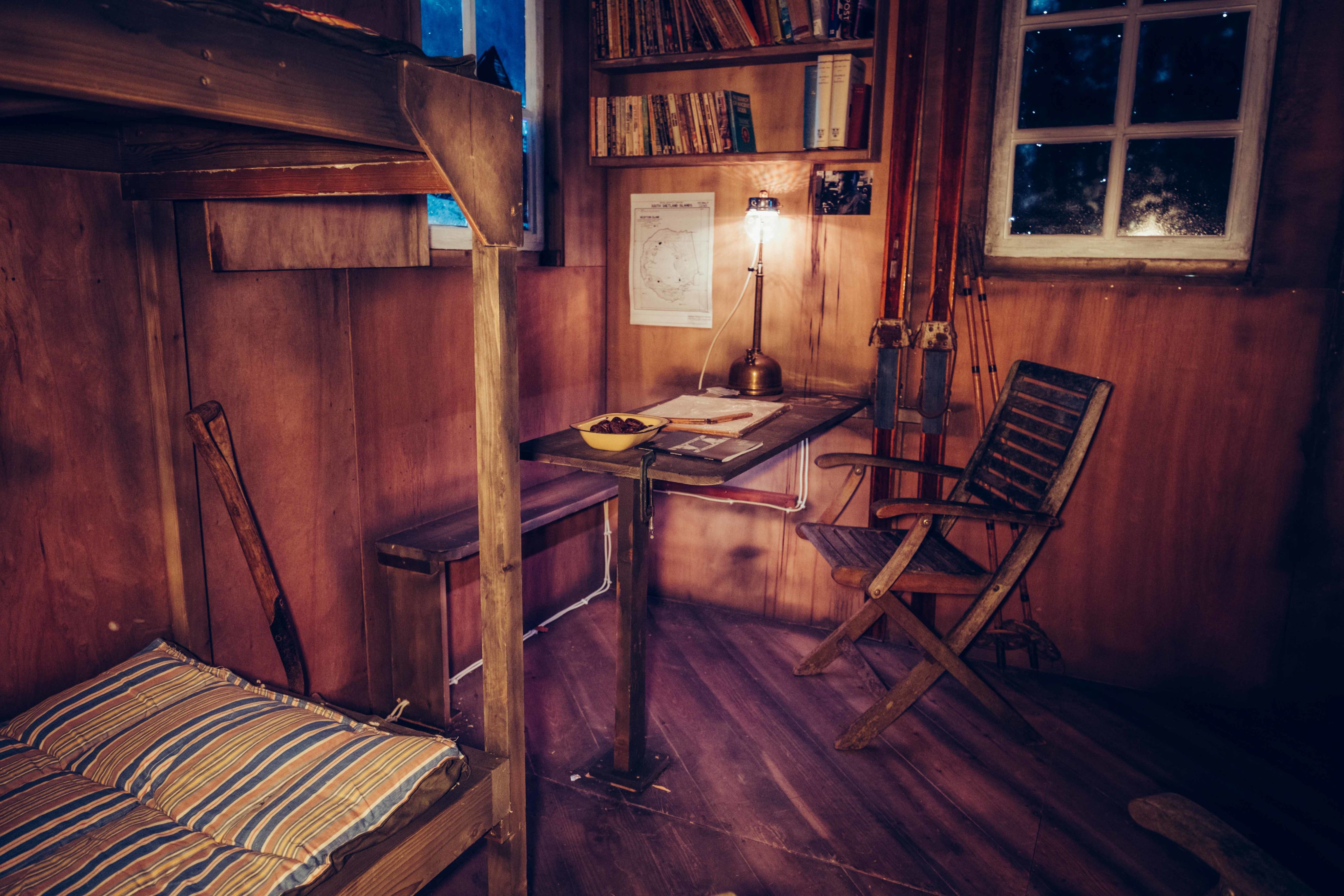
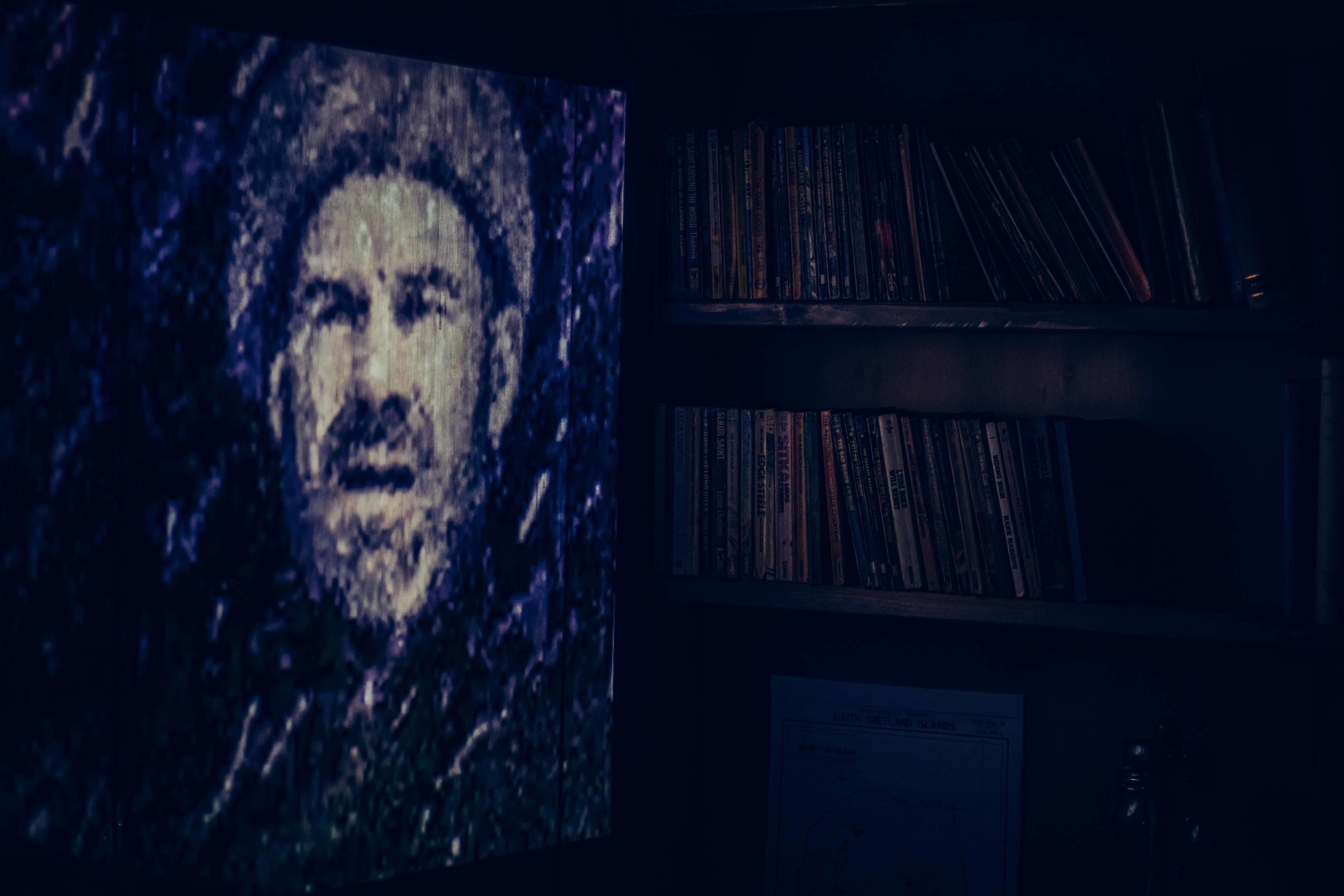
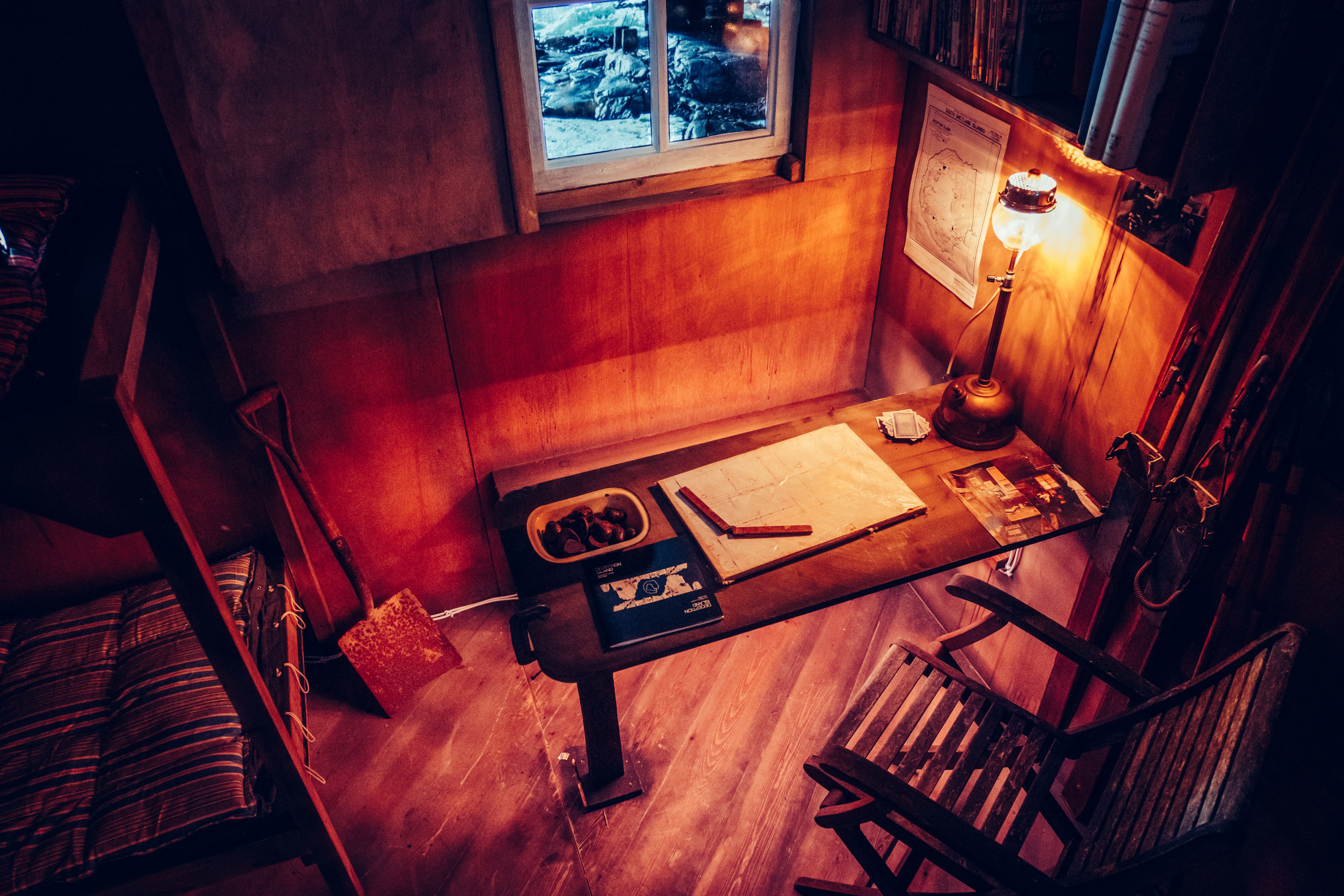




Other polar related events happening to look out for across the Festival are:
- The Art of the Science: Workshop series: Join us at the Polar Museum with artist Alice White, to explore where science and art collide and discover how the spirit of exploration is shared by artists and scientists alike. This exciting series of co-disciplinary workshops for 15-18 year olds combine practical art techniques with live science experiments and a chance to be inspired by the awe inspiring, icy worlds of the Polar Regions
- Ice Worlds @ British Antarctic Survey: Introducing ‘Ice Worlds’, a dazzling showcase of environmental science, engineering and technology at the British Antarctic Survey. To give you a taste of what it’s like to live and work on the frozen continents, meet polar scientists and engineers who live there, discover the methods they use to study the ice, rocks, ocean and animals, and how these icy landscapes are being affected by climate change.
- Polar pop-up family day: life on the ice: Join us at the Polar Museum to explore life on the ice – the trials and tribulations of living and working in the coldest place on Earth - Antarctica. There will be sanitised object handling, hands-on activities, and museum trails. There will also be some short films and science demonstrations running in our lecture theatre at points throughout the day. Timed, bookable tickets available specifically for children and their carers.
- Postcards to the planet: Greetings from a changing planet. Explore the museum objects that hide a history of how we have understood the environment and the challenges it now faces. At pop-up events throughout the University Festival at the Polar Museum, we will be inviting you to send a postcard to our changing planet. Draw an image, write or record a message or take a photo.
Polar research in Cambridge
Cambridge is home to the British Antarctic Survey HQ and the Scott Polar Research Institute, putting it at the forefront of polar exploration and research.
We spoke to researchers, PhD students and academics who have lived and worked in Antarctica to understand why research in the freezing conditions is important to us all.
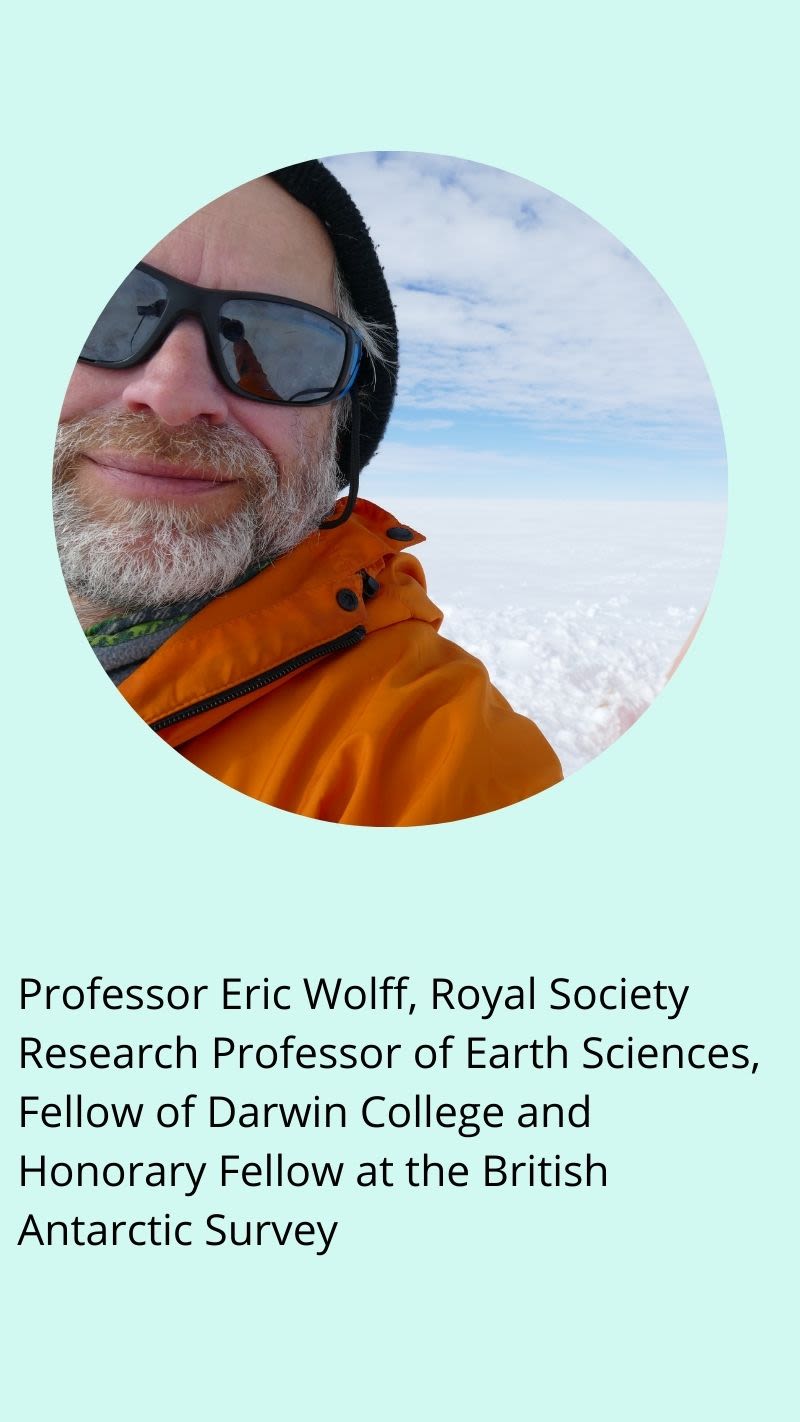
My research uses ice cores drilled from the Antarctic ice sheet to learn about past climate. In the most extreme case these cores extend all the way to the bottom of the ice sheet, through 3 kilometres of ice and 800,000 years of climate history. They show us how ice ages have come and gone.
Air bubbles within the ice allow us to see how carbon dioxide has varied with those natural climate changes, and then how the amount of carbon dioxide has rocketed outside its normal range in the last century. My most recent research looks at how the West Antarctic Ice Sheet behaved the last time Antarctica was a little warmer than today. This has obvious implications for what could happen to sea level in the future.

Eric and team celebrating Christmas on the ice. Credit: Dr Eric Wolff
Eric and team celebrating Christmas on the ice. Credit: Dr Eric Wolff
To do this work we travelled as a team of 8 scientists and engineers to Skytrain Ice Rise, a remote part of the ice sheet. There we slept in two-person pyramid tents, and ate together in a larger communal tent protecting us from the temperatures of -20 degrees and the strong winds. First we had the arduous task of building the camp and getting the drilling equipment in place.
After that work consisted of a sequence of lowering the drill down the hole, collecting another metre of ice, measuring, marking and bagging it for transport to the UK and repeating the sequence. After 45 days of that routine we reached the bottom of the ice sheet, at a depth at this location of 651 metres. A successful conclusion, and a happy return to warmer climes!
As part of my job at the British Antarctic Survey, I am very fortunate to be able to visit Rothera Research Station on the Antarctic Peninsula every 2-3 years to carry out sampling and practical experiments in the field.
I am a molecular biologist and I study the genes of a whole range of different Antarctic marine species, from bacteria, through clams and sea urchins, to fish (none of the well-known cuddly stuff). My research interest centres around understanding how these animals have adapted to life under the ice, where the temperature of the water barely changes by more than 2°C during the year.
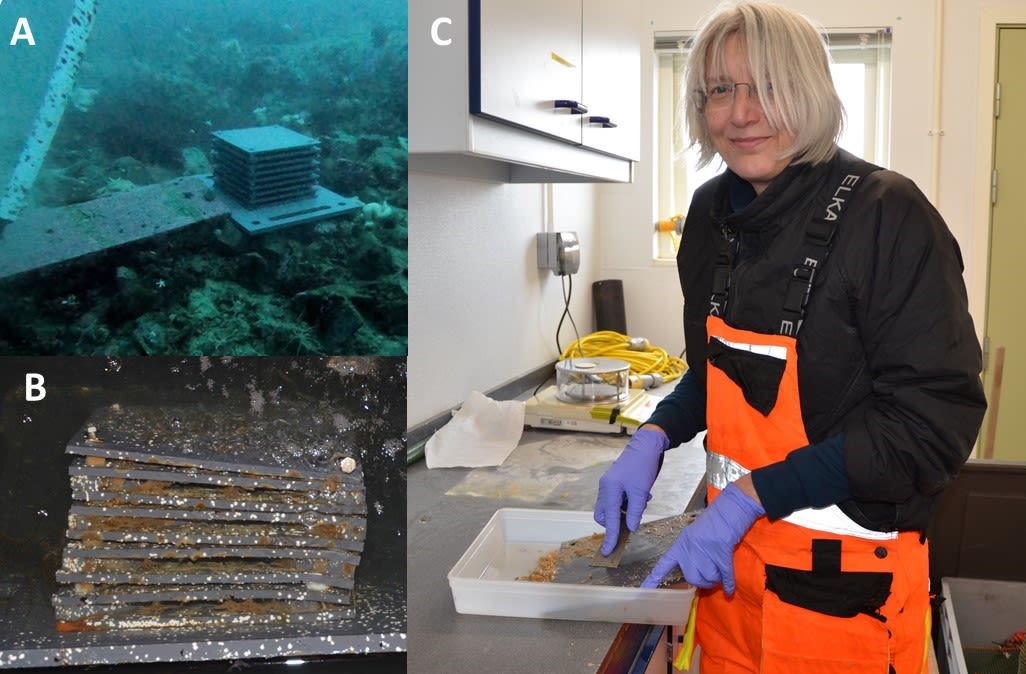
Melody undertaking Artificial reef monitoring structures (ARM) sampling. Credit: Professor Melody Clark
Melody undertaking Artificial reef monitoring structures (ARM) sampling. Credit: Professor Melody Clark
I do this by analysing their DNA and identifying how their genes are different to closely related species that live in warmer places. I also want to understand if they are able to respond to climate change. Again, I look at their genes, this time, by examining the genes they produce in response to different conditions, which can then tell me if the animal is coping with the new conditions, or if their immune system or stress response is being affected, potentially indicating that they may not be doing so well.
We can also look at how ecosystems change over time by using standard monitoring techniques, such as ARMS (artificial reef monitoring structures), which are deployed for years at a time. The good news for me is that most of this work is carried out in the laboratory at Rothera, so if the weather is really horrid, I can just stay inside and keep warm and dry!
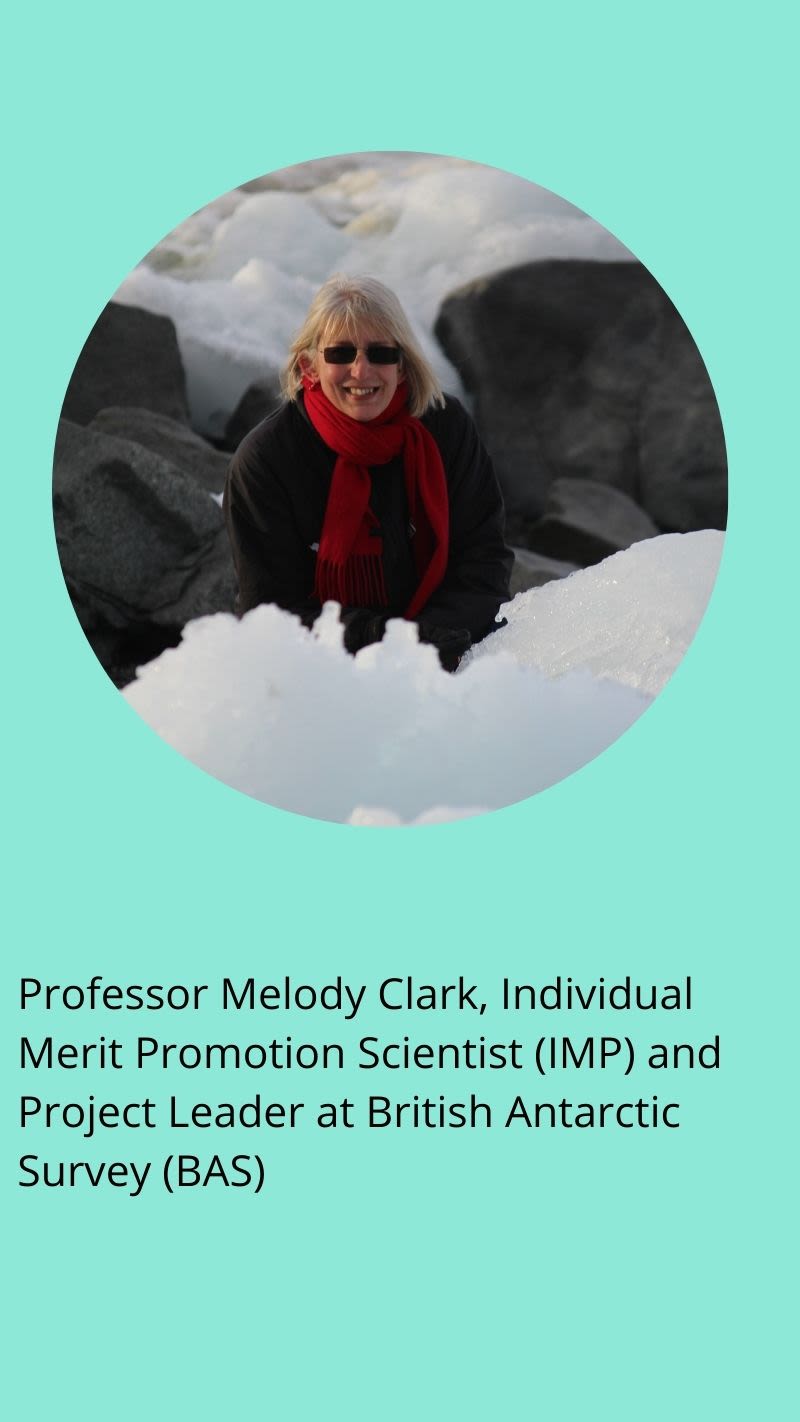
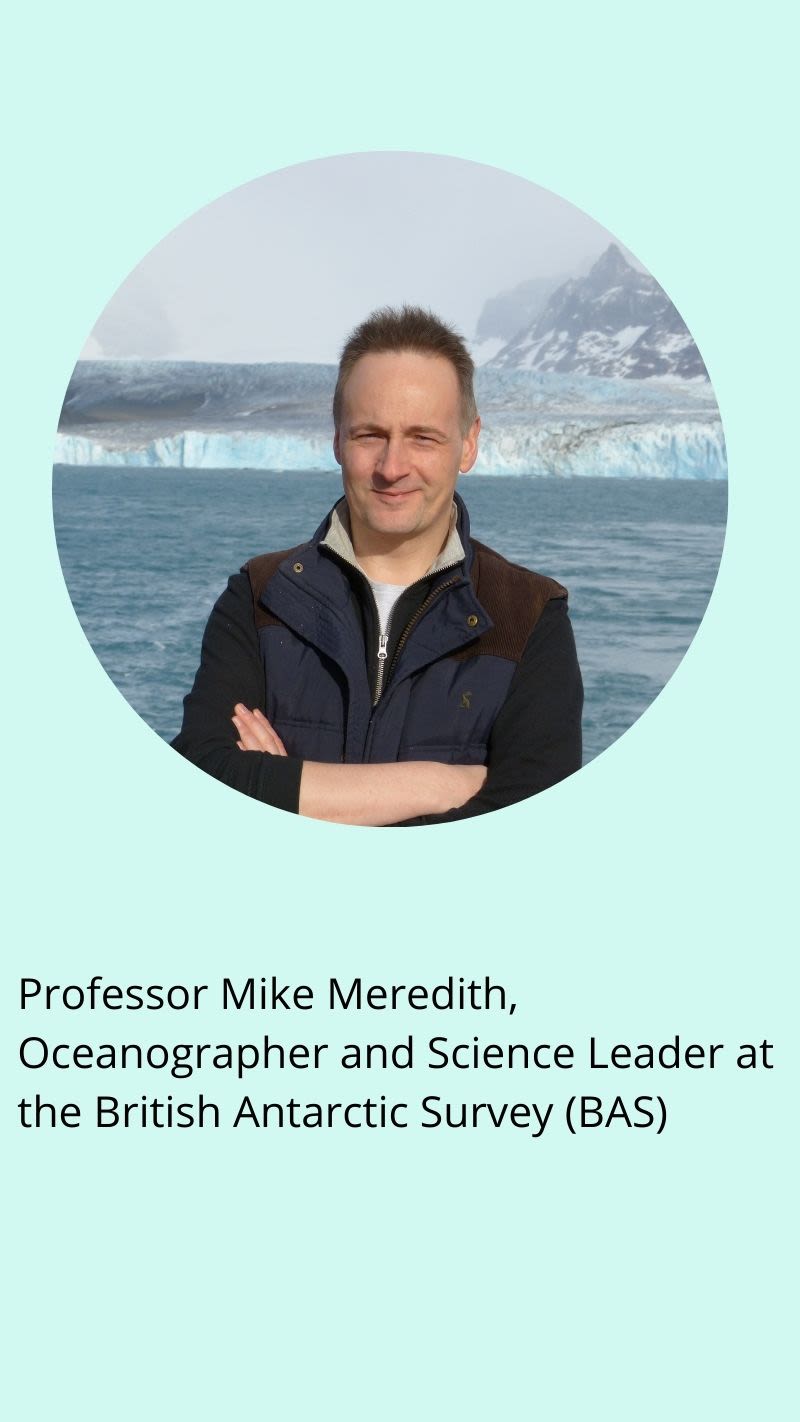
The oceans around Antarctica play a key role in controlling our planet’s climate. They do this by absorbing huge amounts of carbon and heat from the atmosphere, including the additional carbon that humans put there by burning fossil fuels, and the extra heat trapped by the greenhouse effect.
By doing this, the oceans are doing us an enormous climate favour, helping to slow the rate of global warming on land – but we don’t know how this will work into the future.
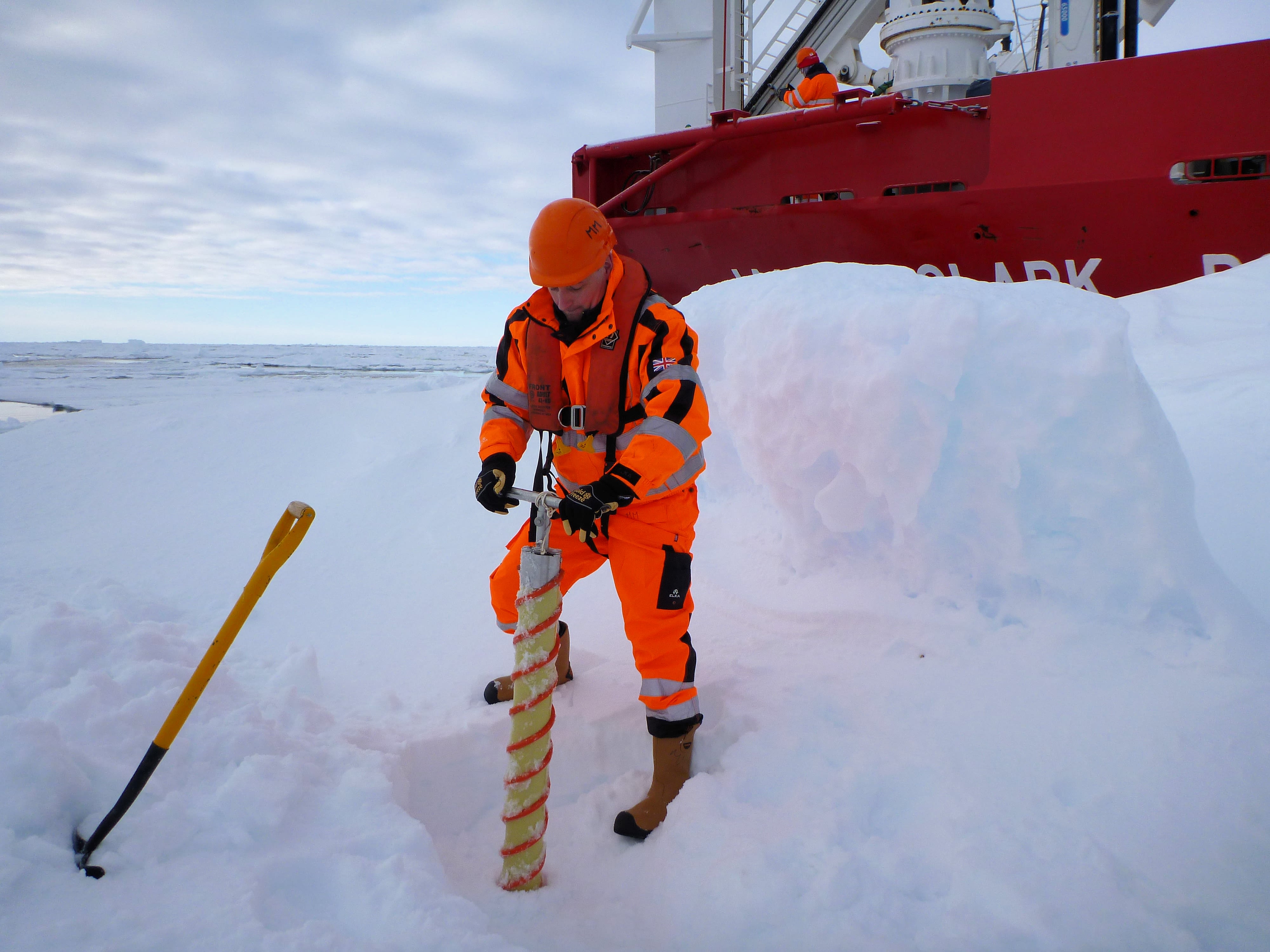
Mike drilling in the sea ice. Credit: Professor Mike Meredith
Mike drilling in the sea ice. Credit: Professor Mike Meredith
My research looks at how the ocean absorbs so much heat and carbon, where it all ends up being moved to and stored, and how likely this is to continue into the future. To do this, I work in teams that sail on the UK’s polar research vessels, spending weeks or months at sea making measurements of ocean properties and circulation, from the sea surface right to the seabed, sometimes miles down.
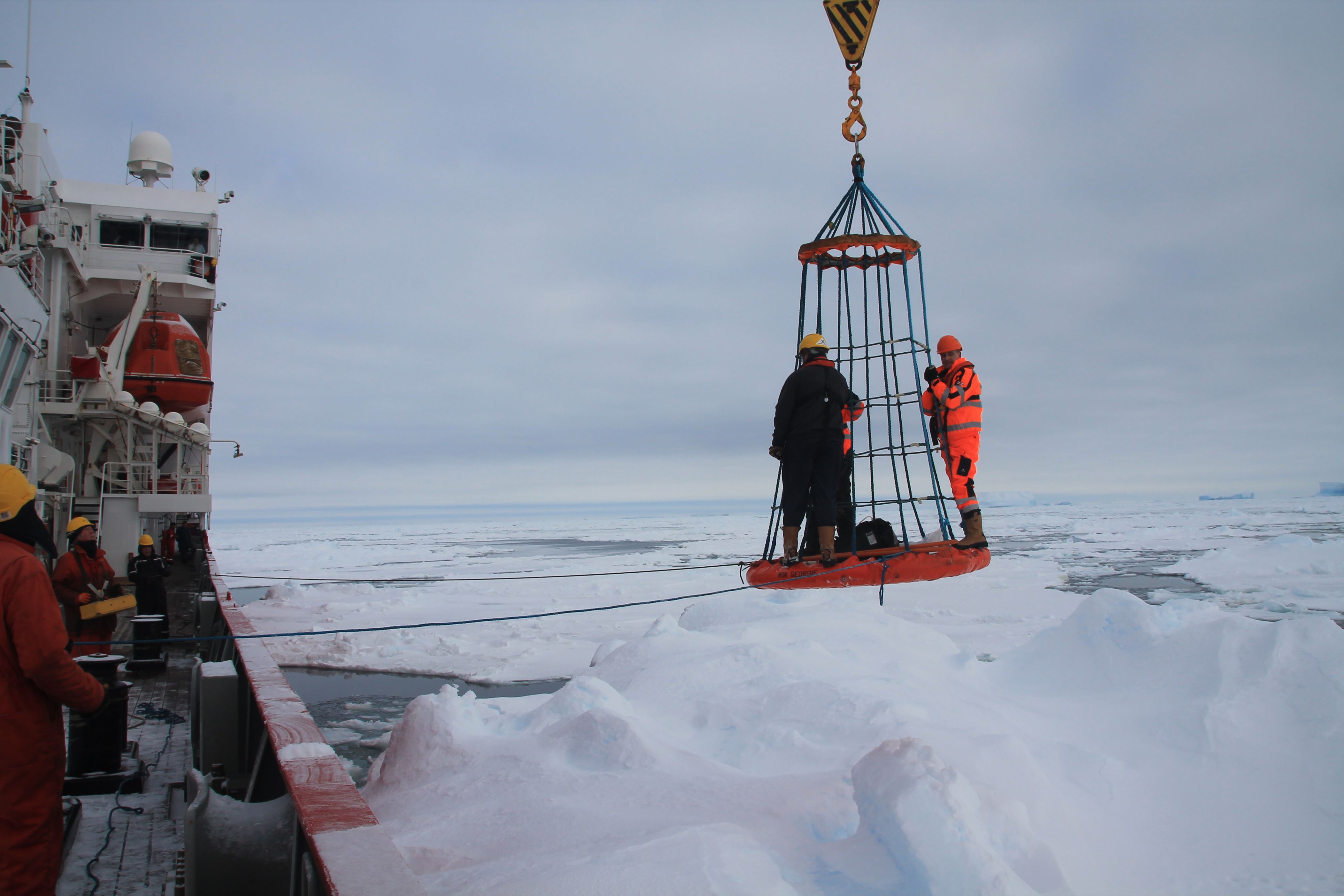
Being launched over the side of the research boat. Credit: Professor Mike Meredith
Being launched over the side of the research boat. Credit: Professor Mike Meredith
Whilst many measurements are made directly from the ship, we also increasingly use robotic vehicles that can be deployed from the vessel or from coastal stations in Antarctica, and piloted remotely from the UK. Whilst the conditions at sea around Antarctica can be rough and it’s difficult being separated from family and friends for long periods, life at sea is still an extraordinary privilege – we get to see some of the most stunning views and incredible wildlife that the planet has to offer, whilst helping to better our understanding of climate change.
I am a research associate at the Scott Polar Research Institute investigating the instability of the infamous Thwaites Glacier in west Antarctica.
Thwaites Glacier drains an area roughly the size of Great Britain and accounts for around 4% of global sea level rise. Every year, I travels to Antarctica and conducts geophysical experiments on Thwaites to observe how small changes at the glacier’s boundaries may induce large effects over the future of the West Antarctic Ice Sheet.
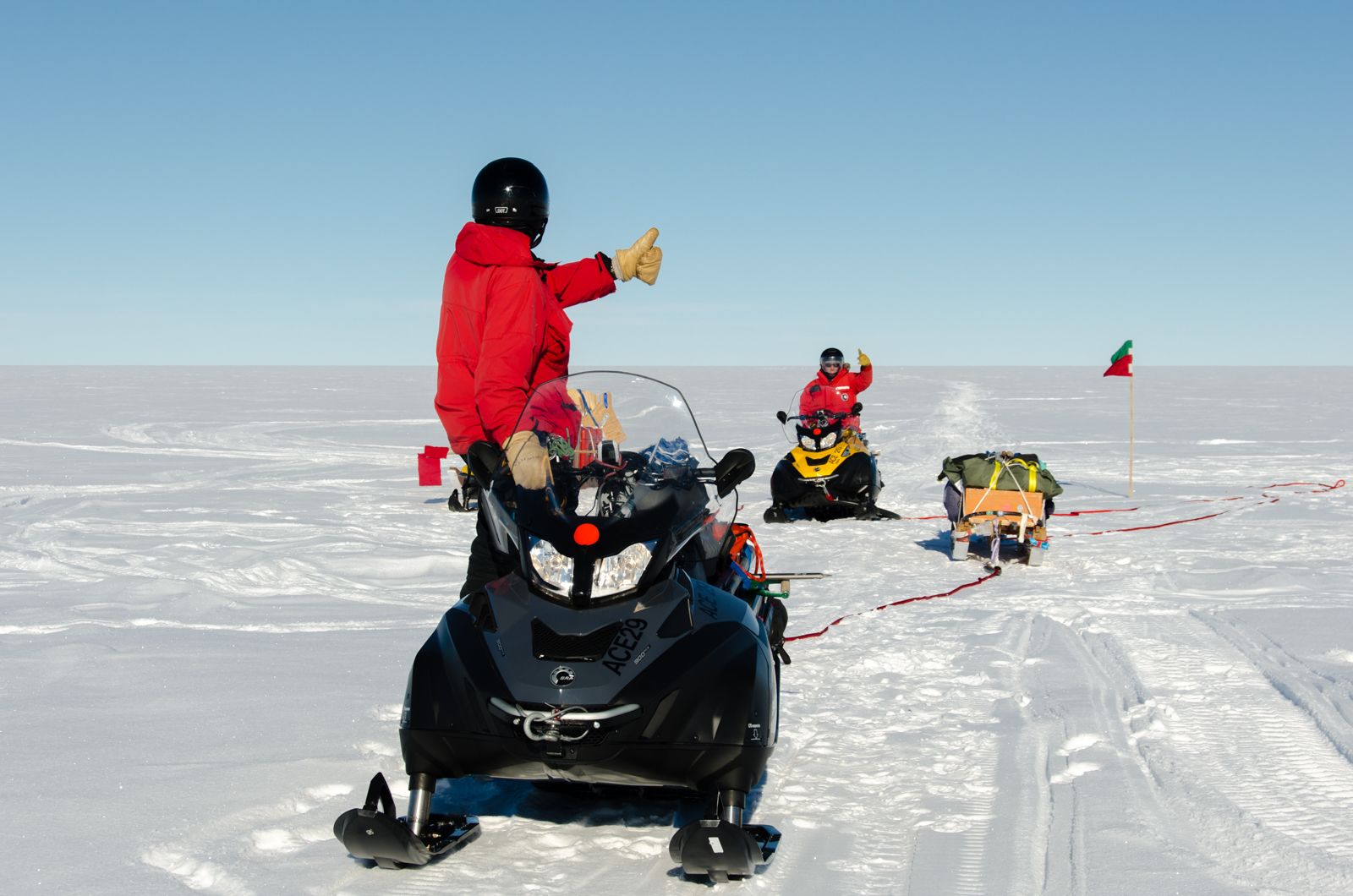
Snow mobiles carrying research equipment. Credit: Dr TJ Young
Snow mobiles carrying research equipment. Credit: Dr TJ Young
To collect their hard-won geophysical data, me and my colleagues are dropped off in the middle of the Antarctic Ice Sheet by airplanes, where summer temperatures average -20°C and heavy snowstorms blow through up to once a week.
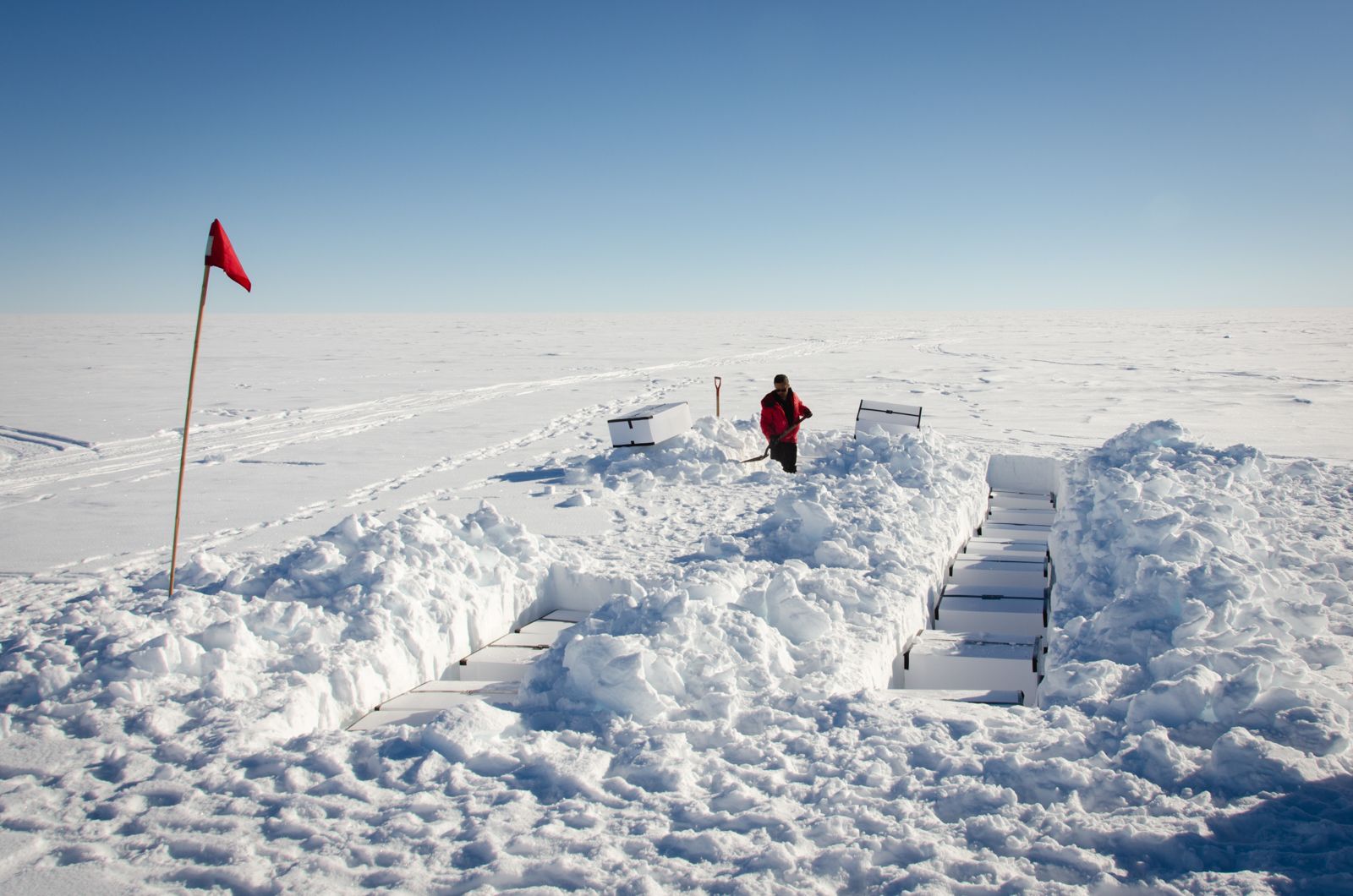
Credit: Dr TJ Young
Credit: Dr TJ Young
With only tents for shelter, a generator and solar panel for power, and snowmobiles for local transport, they deploy scientific instruments such as GPS and seismometers across the margins of Thwaites Glacier to monitor its movement and deformation over time. I makes sure to also conduct extensive radar surveys that offer a glimpse into the history of the Glacier to explain why ice flows so smoothly from the ice sheet interior to the ocean.
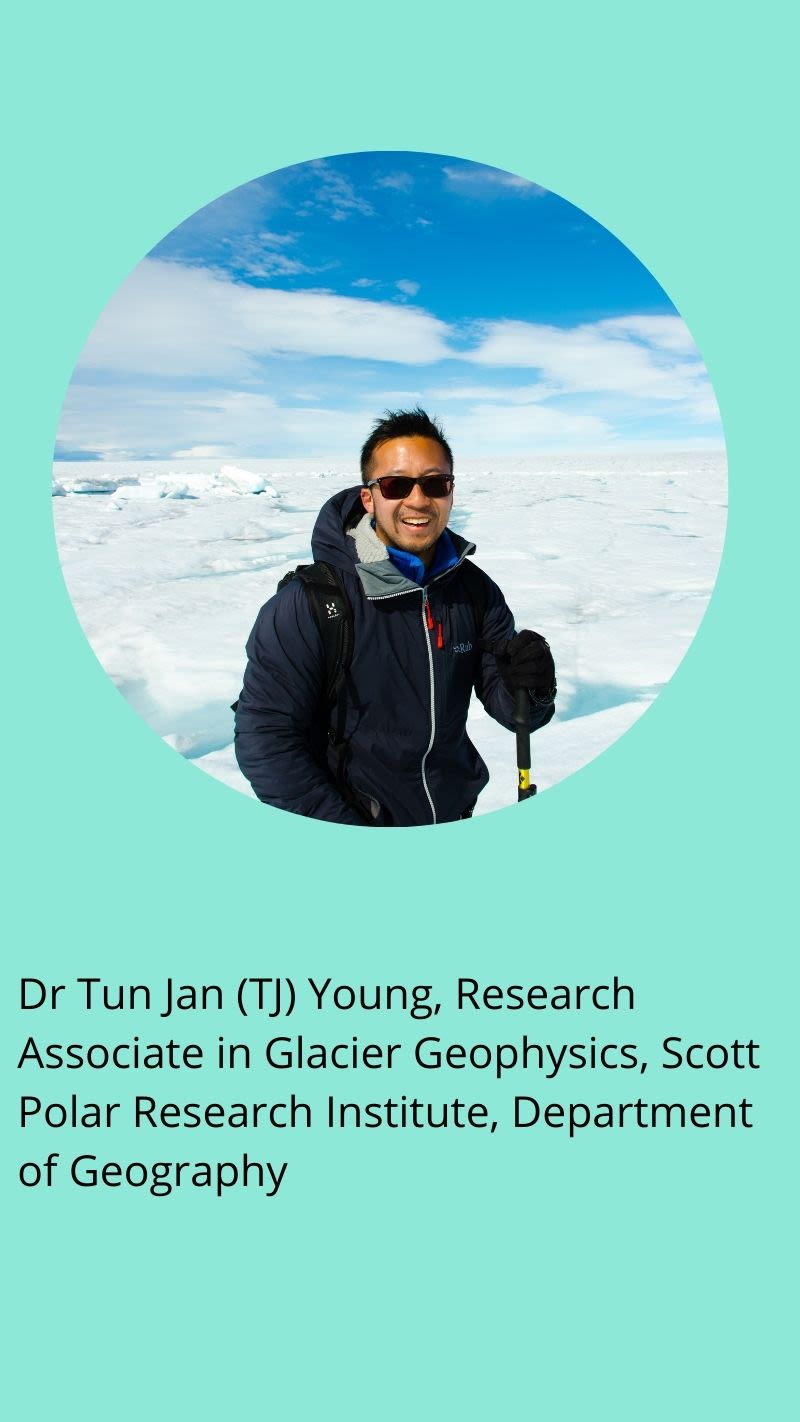
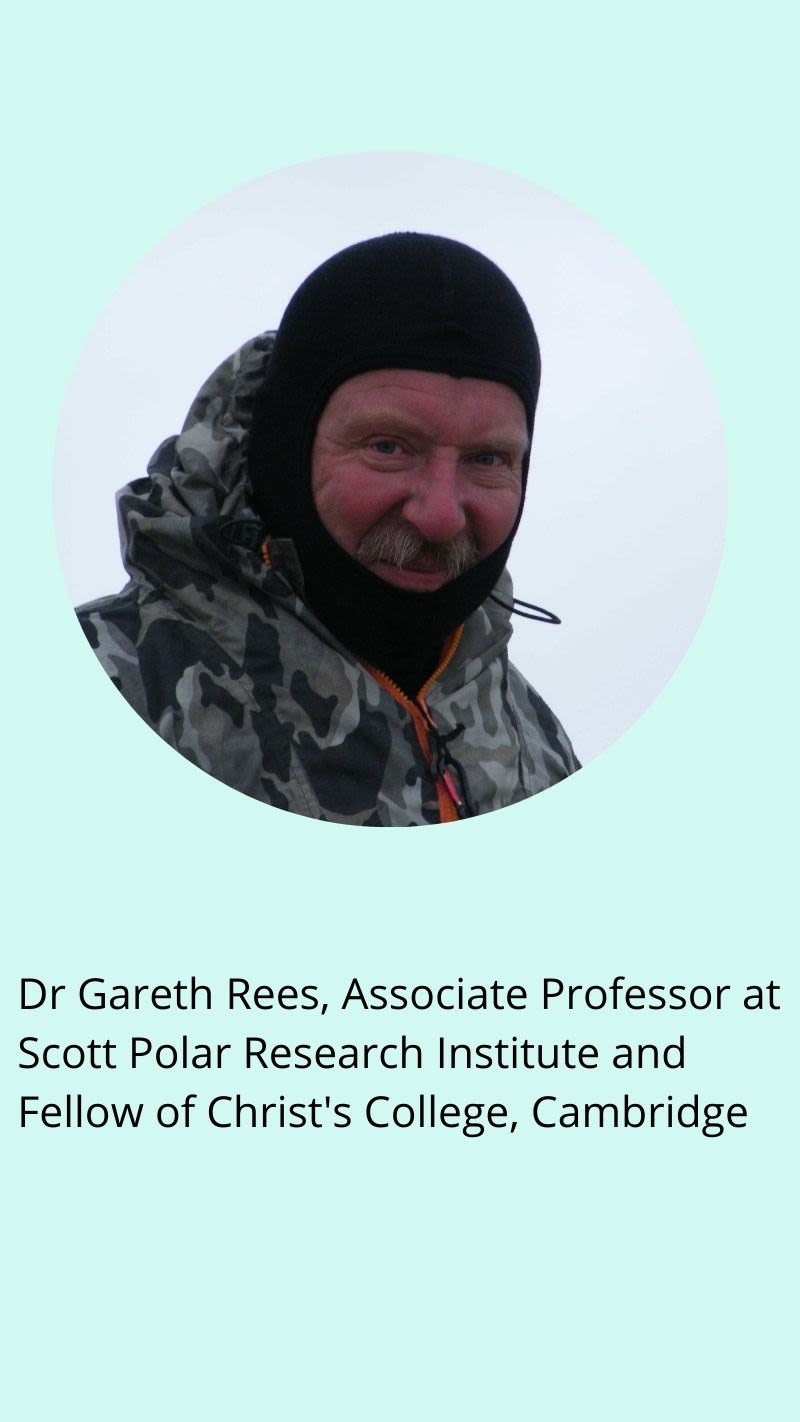
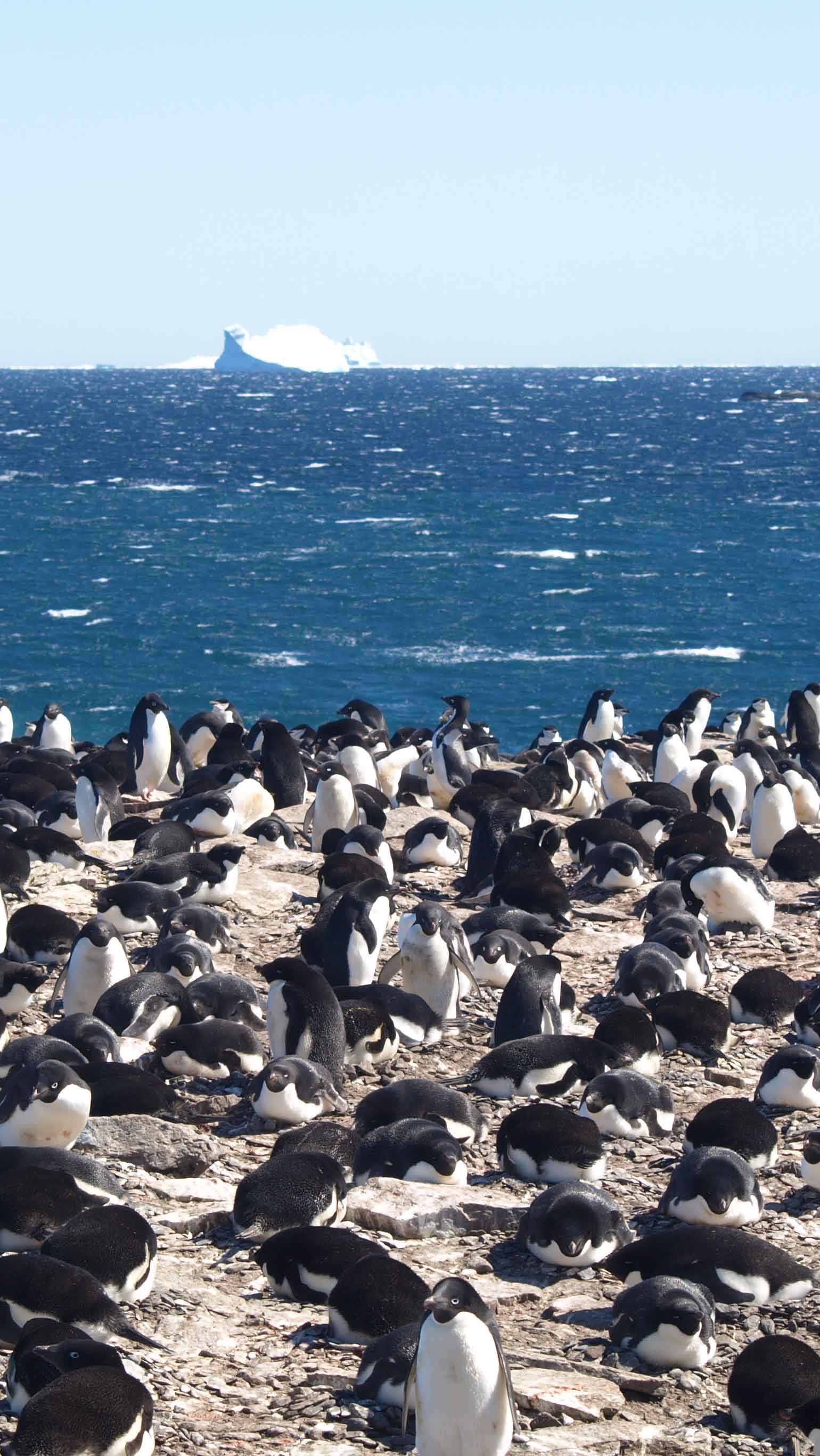
Credit: Dr Gareth Rees
Credit: Dr Gareth Rees
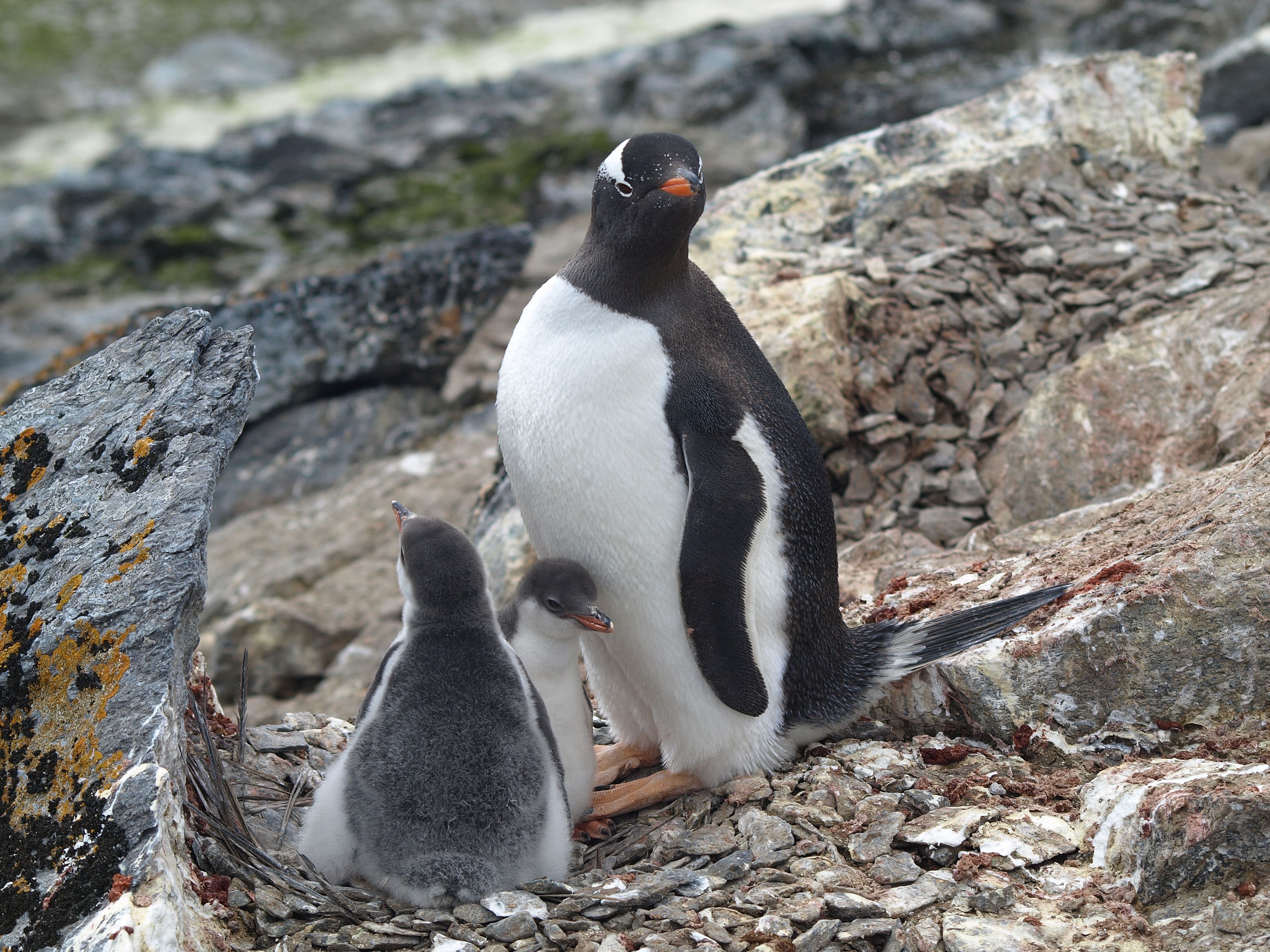
Credit: Dr Gareth Rees
Credit: Dr Gareth Rees
I am based at the Scott Polar Research Institute, where I am – amongst other things - a specialist in the use of satellite (and now also drone) images to study polar landscapes.
A lot of this work is concerned with understanding the relationship between climate change and the behaviour of trees and shrubs in the far north of Eurasia, but I also collaborate with Dr Peter Fretwell at British Antarctic Survey (BAS) to develop new methods to study the distribution and behaviour of animals at high latitudes.
A few years ago, this collaboration led us to the conclusion that we needed to understand, and this may be one of the most bizarre phrases I have ever typed, the optical properties of penguin guano (‘poo’ to most of us).
Why on earth would anyone need to do that? Well, the diet of some species changes, during the breeding season, to one high in krill, a little shrimp-like crustacean which, like shrimps, is pink.
Pink material goes into the penguins at one end, and pink material… comes out at the other end. The pink guano stains are a marker of the presence of the penguins, and if a penguin colony is big enough, we can see it from space. To really tie this relationship down properly we needed to understand just why the guano is pink, and that involved travelling to a place with a lot of penguins and making a lot of optical measurements, of pink guano, white guano, yellow guano (it is actually quite a colourful material!), and… penguin vomit. The vomit is what the penguins collect as food for their chicks, carried in their stomachs, and it contains a lot of krill.
I travelled, with my PhD student, to the BAS research station on Signy Island. This is very small – it can accommodate at most eight people – and it is difficult to reach. The island is very mountainous, with an icecap in the middle, and there is nowhere that a plane could land so it has to be reached by ship – which isn’t easy since there is often a lot of ice in the sea.
The base is too small to have specialists like cooks and doctors, so everyone has to do everything – cleaner, night watchman, radio operator… It was, and felt, very remote indeed, and it was sobering to realise that the only way to return home was if a big ship could manage to reach the island again, pushing its way through the ice, in a couple of months’ time.
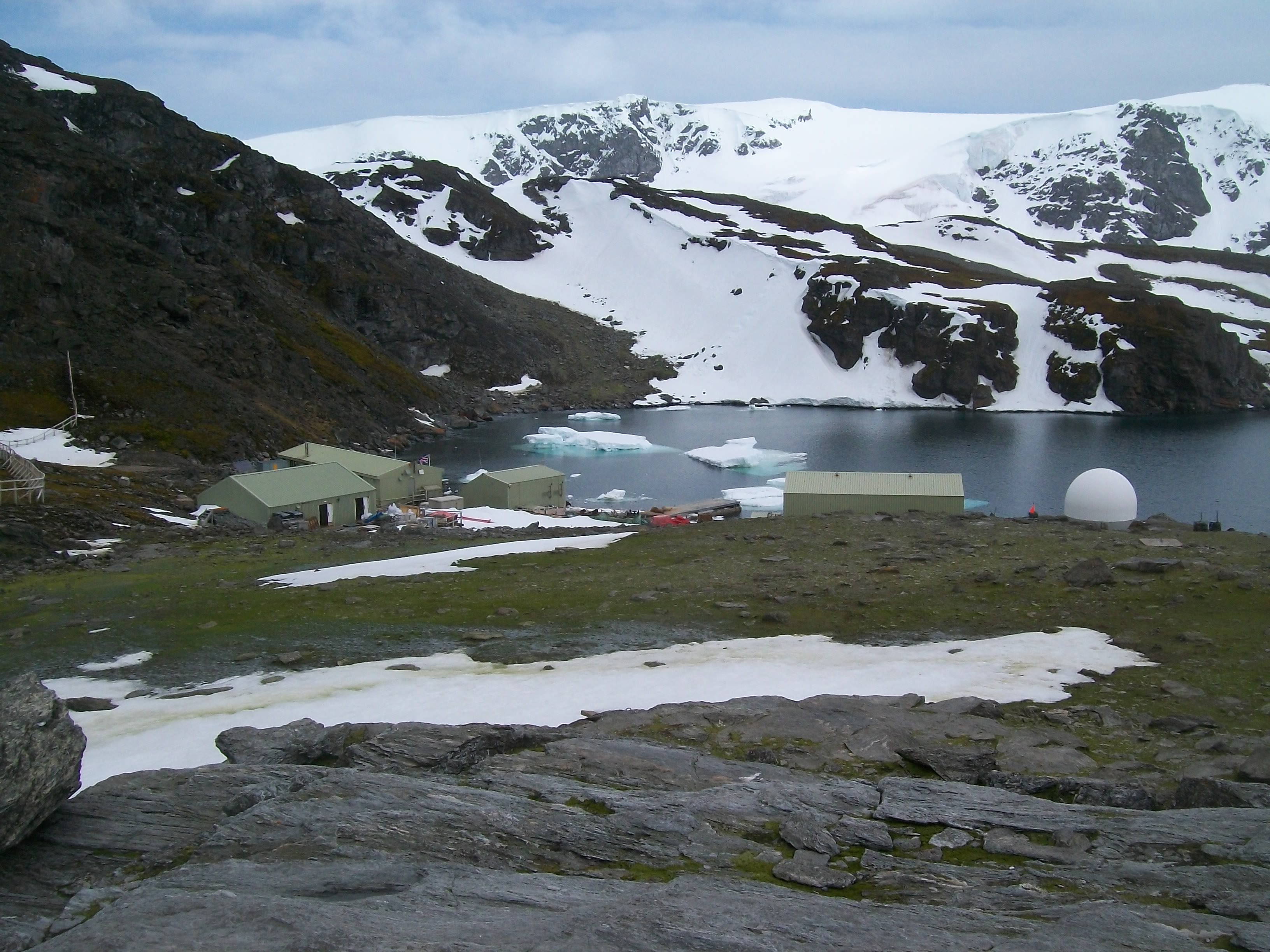
Signy Island base camp. Credit: Dr Gareth Rees
Signy Island base camp. Credit: Dr Gareth Rees
A typical day on Signy Island: After breakfast in the main building, we get dressed in our special clothing. It’s not excruciatingly cold but we have to be careful. We leave a message on the board to say where we’ve gone and when we should be back, and we check the radios. It takes an hour and half to walk through the snow from the base, over a mountain pass, to reach the research hut at Gourlay 2½ miles away.
We have some heavy equipment to carry so it is quite hard work (I lost half a stone of body weight during my field trip). At the hut, we can make ourselves a cup of tea on the Primus stove, then move out to where the penguins are and start measuring their ‘offerings’. We do this for a few hours, with a break for lunch in the hut, and sometimes a break for taking photographs because everything is so spectacularly beautiful.
Then, we pack up and walk back to base, in time for dinner cooked by whoever is on the rota for that evening. We are all hungry, because the work is so physical. After dinner we might play cards, then spend a few hours in our ‘lab’ processing the data we have collected during the day, then maybe do some personal chores like washing clothes. And.. repeat, for about two months.
What did we learn from this expedition? We conclusively identified the reason for the pink coloration in the penguin guano (you can read about that here), and that means that we can now more confidently estimate the population of penguin colonies without needing to visit them. And penguin populations respond to environmental conditions over a wide area of the Antarctic, so we have a better understanding of the way the changing climate is altering the biology of this huge and remote region.
My name is Amélie Kirchgaessner, and I am a meteorologist and polar climate scientist.
I am interested in atmospheric processes in the Arctic and the Antarctic. Currently my research focusses on the role of clouds in the polar climate system. In particular I want to find out more about the aerosols that the cloud crystals form on. What are they, and where do they come from?
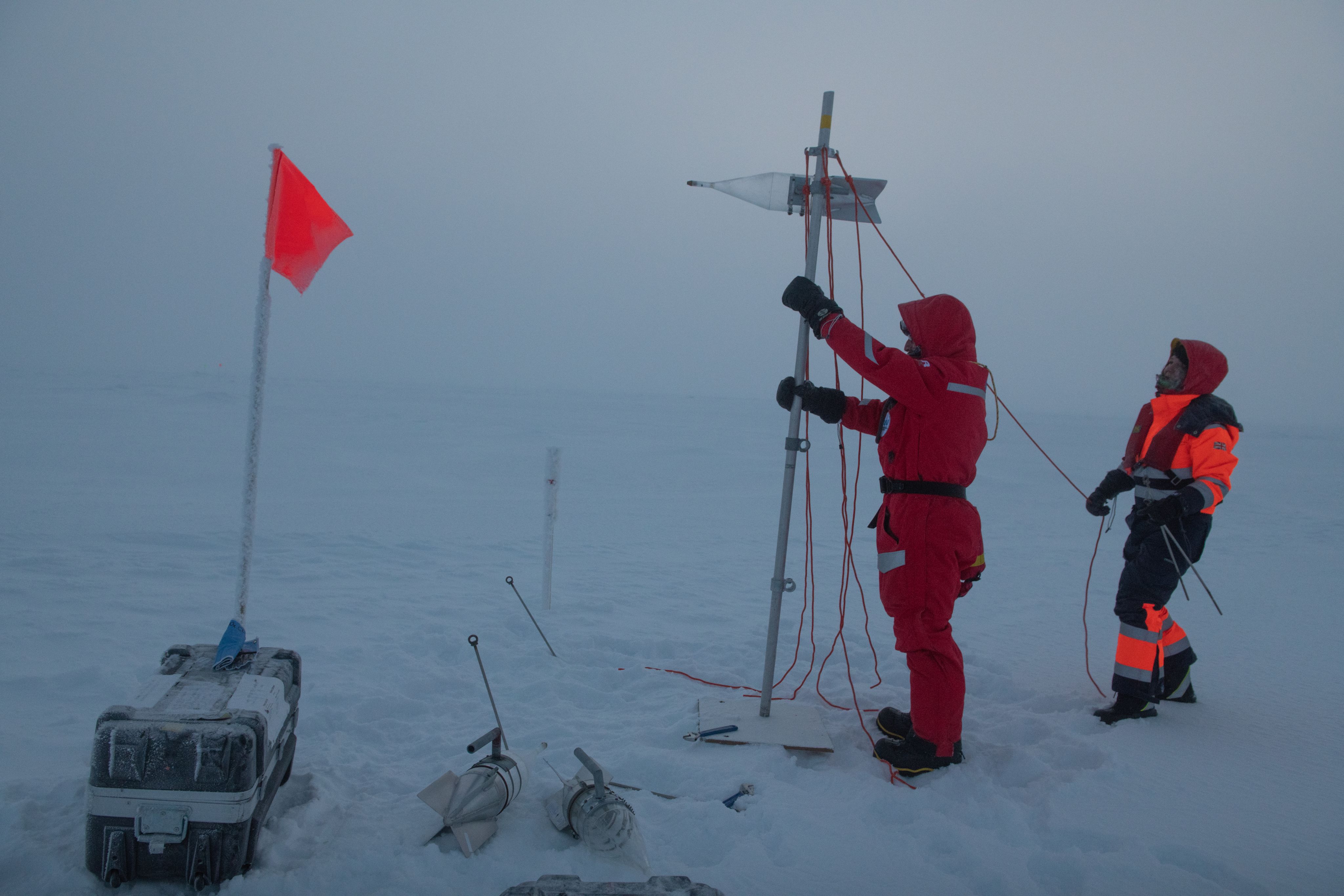
Installing scientific equipment on the sea ice. Credit: Amélie Kirchgaessner
Installing scientific equipment on the sea ice. Credit: Amélie Kirchgaessner
The presence and number of these particles determines to a large extent whether a cloud consists of water droplets or ice crystals. That in turn influences how much energy from the sun can pass through the clouds, and how much is reflected out into space. In an indirect way these so called ice nucleating particles play their role in the global energy balance, and thus influence global warming.
On this quest I have travelled to the Arctic and the Antarctic, where I have carried out measurements by aircraft, on land, and on sea ice. On one hand it is often hard work, requires long days, resilience, and an endless amount of resourcefulness when it comes to trouble shooting. On the other hand, though, it has taken me to breathtakingly beautiful places, I have watched whales, polar bears, and penguins in the wild, and have walked on the Arctic sea ice with 4000m of ocean below my feet.
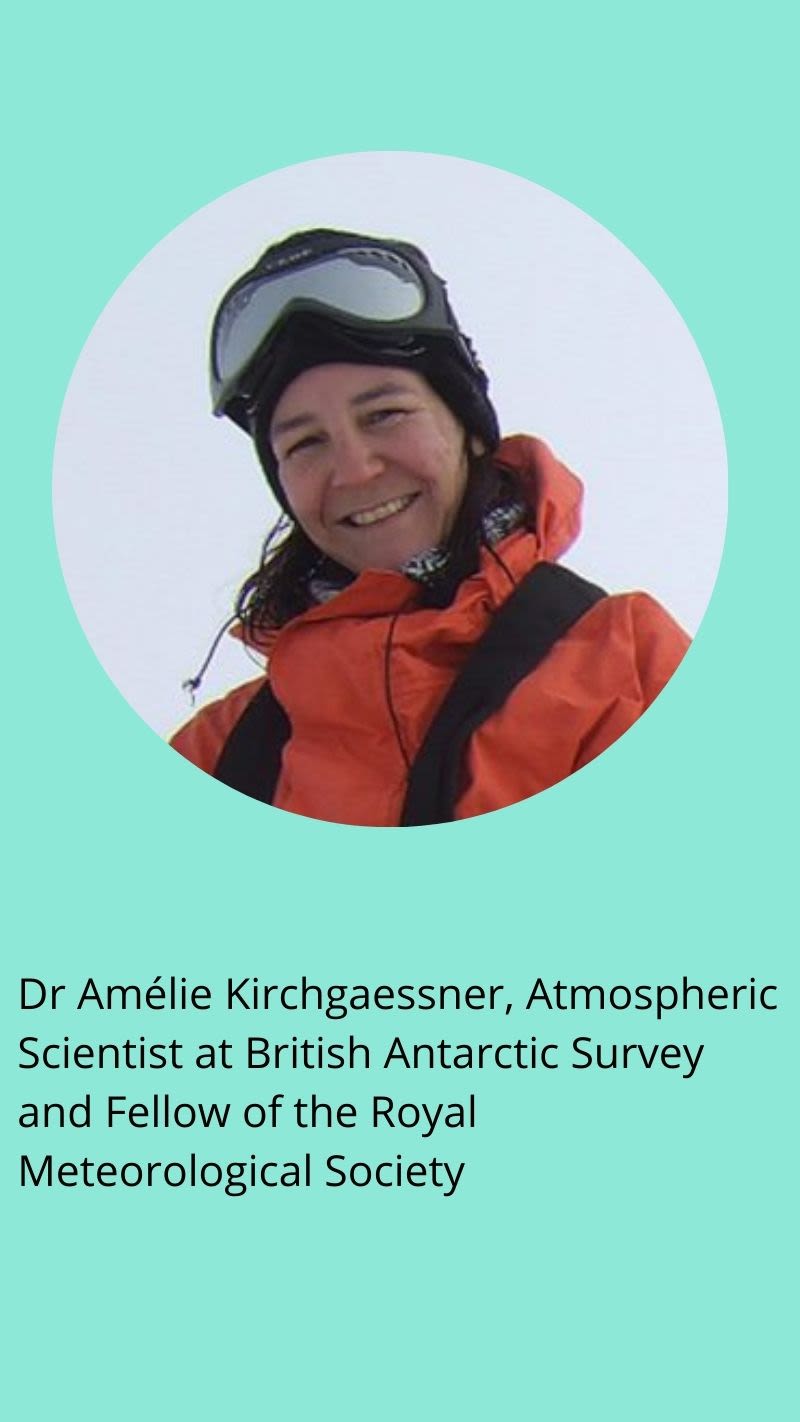
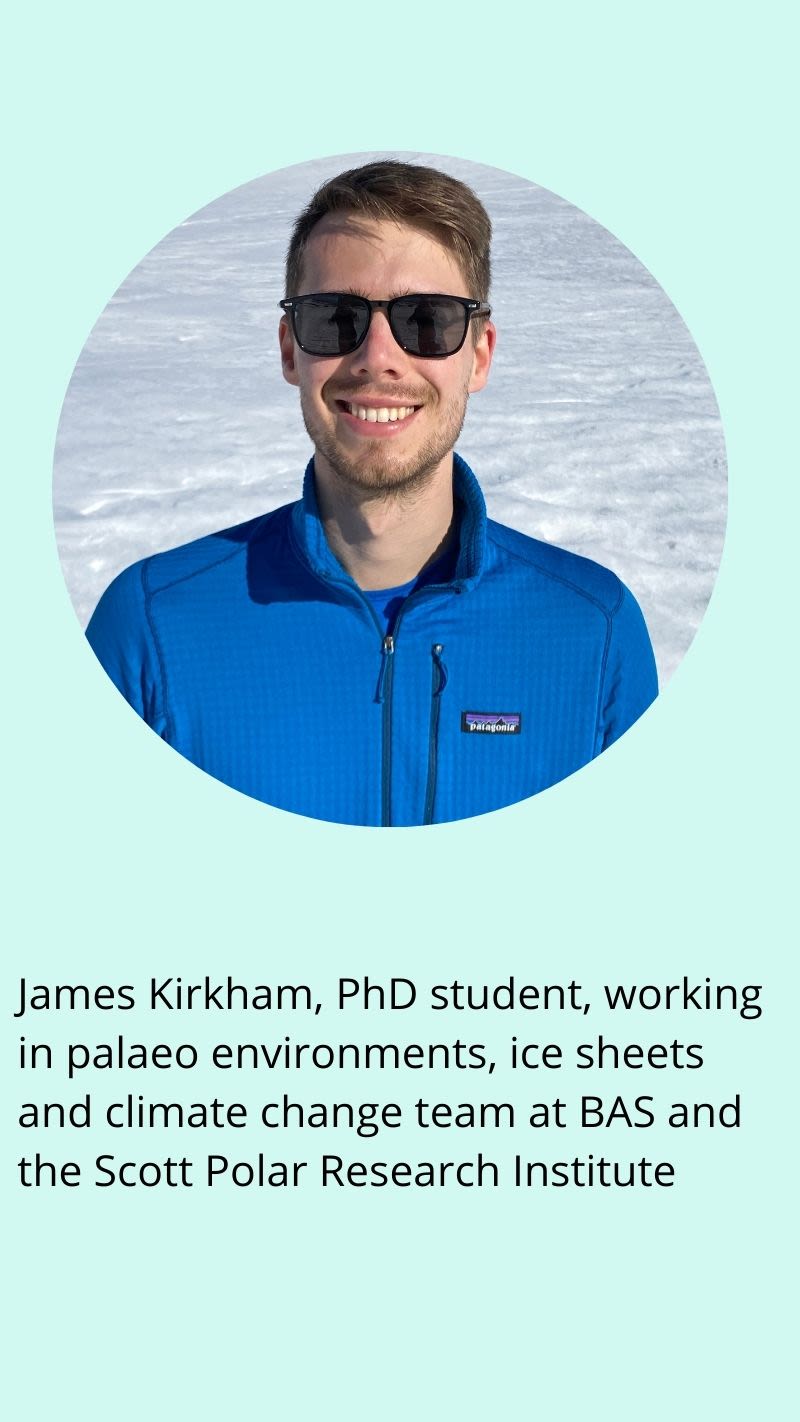
My research uses clues from the past to predict the future of Antarctica. Thousands of years ago, the Antarctic Ice Sheet was much larger than it is today. As the ice sheet retreated, areas once covered by ice were flooded by rising seas.
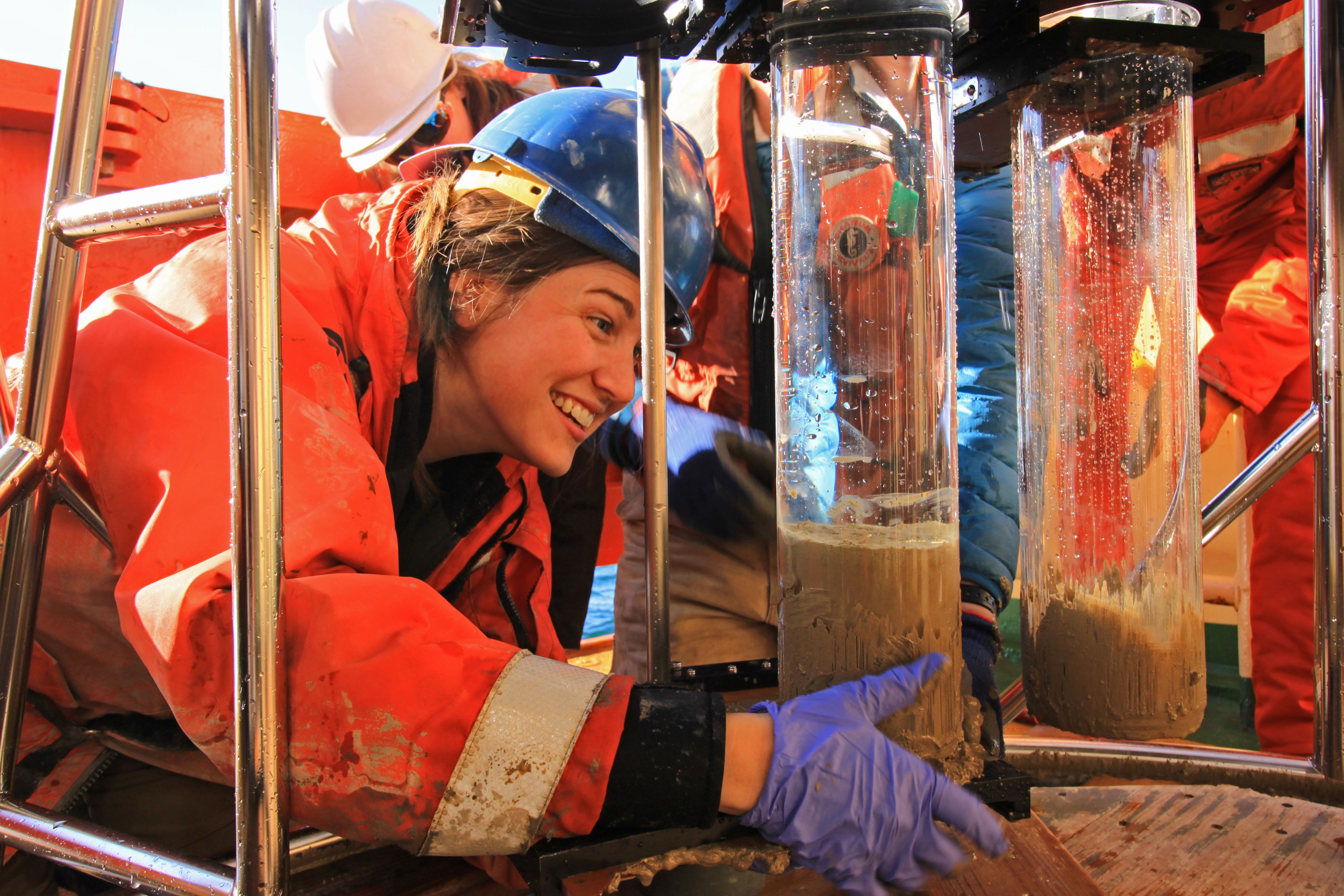
Taking samples. Credit: James Kirkham
Taking samples. Credit: James Kirkham
Like footprints left in the sand when you walk along a beach, this ice left behind a record of its retreat in the sediments now preserved at the bottom of the ocean. My research uses sonar from icebreaking ships to map out these ancient records left behind on the Antarctic seafloor.
Because it is difficult and dangerous to examine the environment underneath modern-day ice sheets, these accessible marine records provide valuable information about what goes on beneath ice sheets as they retreat. This research ultimately helps us to predict how Antarctica will respond to climate change in the future.
Antarctica is an otherworldly place; a land of contradictions. It is a continent that, despite being covered in frozen water, receives so little snow that it technically counts as a desert. Its immense sheets of ice are deceptively fragile. It is a beautiful, yet hostile, place.
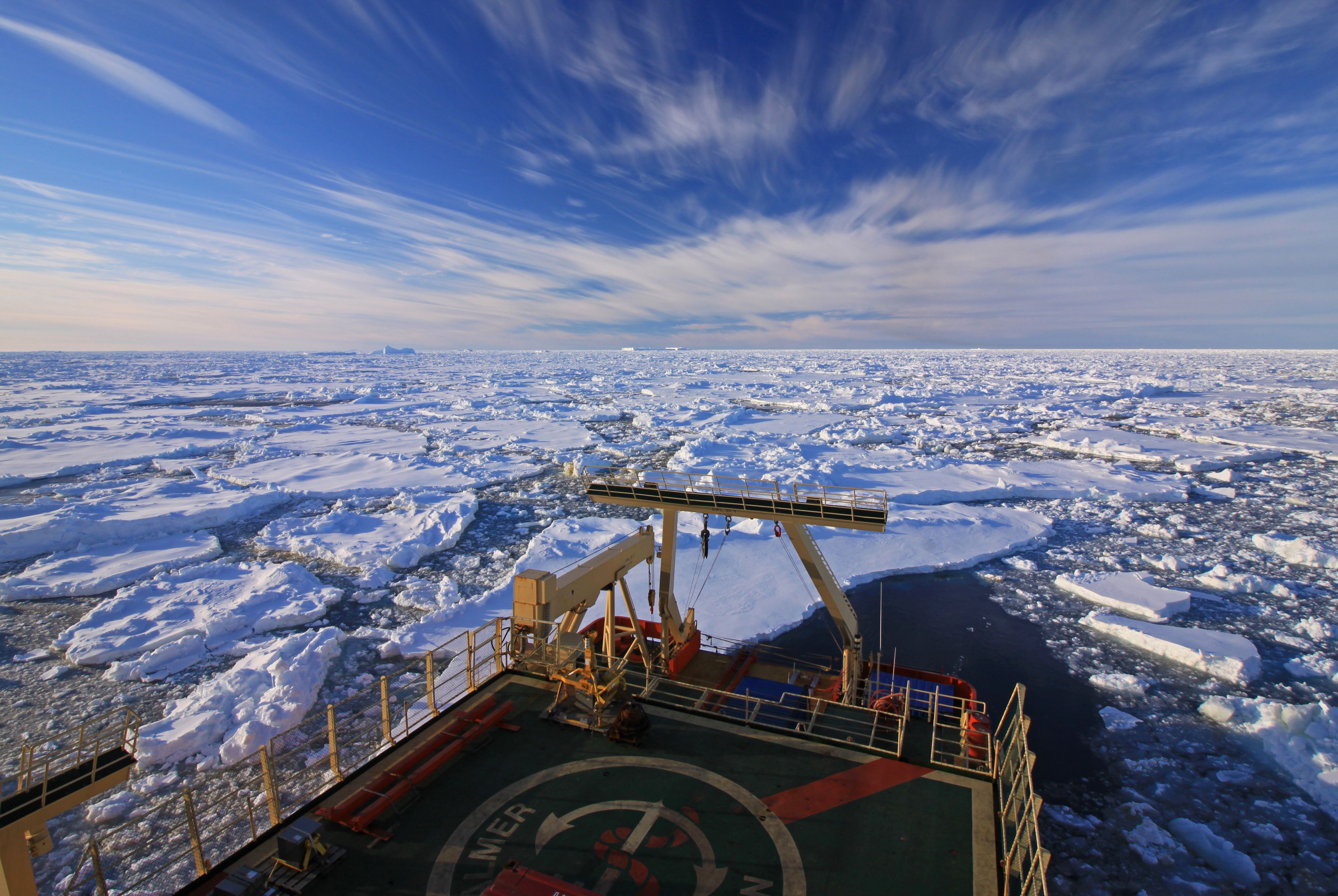
A view from the back of the research ship. Credit: James Kirkham
A view from the back of the research ship. Credit: James Kirkham
Standing on the bow of the ship surveying this rapidly changing environment, you are surrounded by shades of pastel blues and whites in the day and fiery sunsets in the evening. Icebergs gurgle as they drift past in the current, the wind rushes past your ears, carrying the cries of squawking penguins from the immense breeding colonies fringing the edge of the ice sheet.
The time we spend there is short and precious so we work in shifts — twelve hours on and twelve hours off — seven days a week — to maximise the data we collect when we are there. Although I usually work the night shift, the sun does not sink below the horizon in the summer months, making it difficult to detect the passage of time.
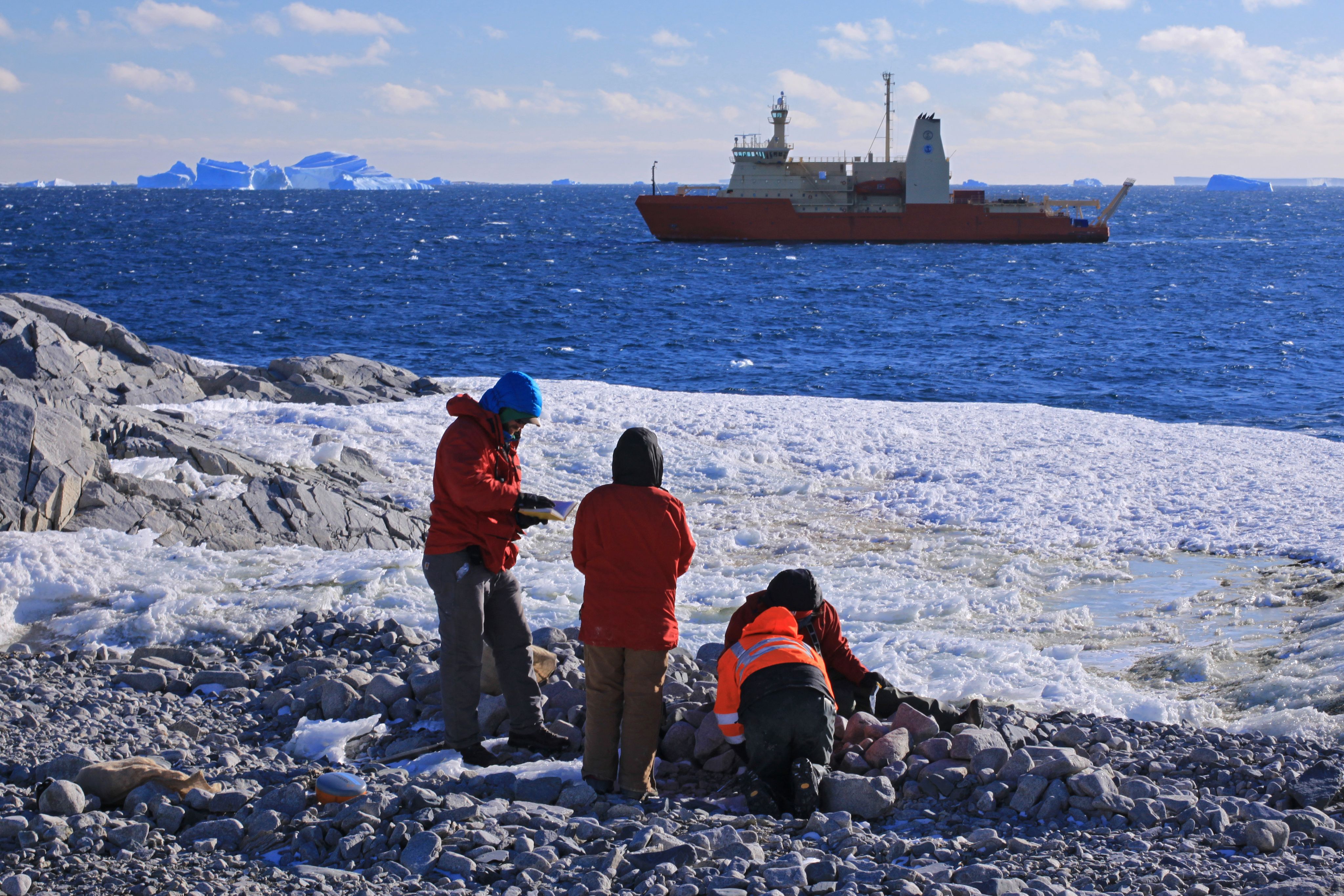
Researching on the shore line. Credit: James Kirkham
Researching on the shore line. Credit: James Kirkham
It is an immense privilege to work in this colossal wilderness where the changes happening in this remote part of the world will ultimately affect us all.
Published 31 March 2022
With thanks to:
Elizabeth Lewis Williams, Dr Eric Wolff, Professor Melody Clark, Professor Mike Meredith, Dr TJ Young, Dr Gareth Rees, Dr Amélie Kirchgassner, James Kirkham for contributions
Photography: as credited, Deception Island hut pictures from Story Machine
The text in this work is licensed under aCreative Commons Attribution 4.0 International License


